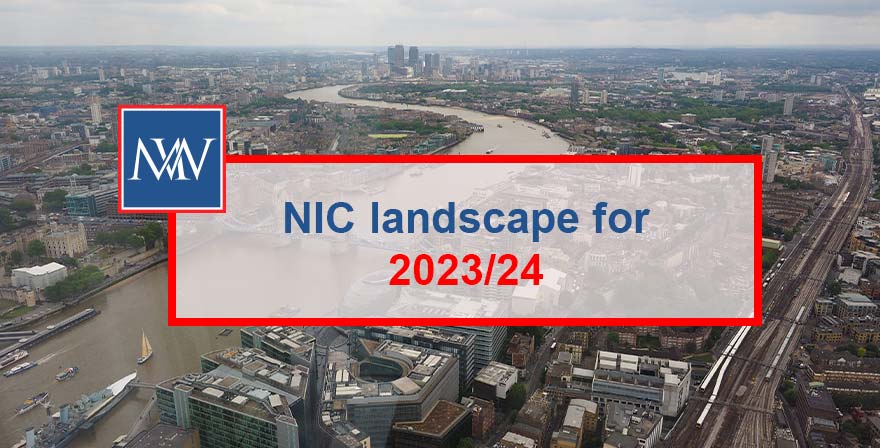
NIC landscape for 2023/24
As far as National Insurance was concerned, the 2022/23 tax year was a tricky one featuring in-year changes to the primary threshold and in-year changes to the Class 1, 1A, 1B and 4 rates. This resulted in some strange numbers, with average rates applying for the purposes of Class 1A, Class 1B and Class 4 contributions. Average rates are also applied for Class 1 purposes to company directors who have annual earnings periods.
Hopefully, 2023/24 will be more straightforward. At the moment, the NIC landscape for 2023/24 looks as follows.
Employees and employers: Class 1
The Class 1 thresholds remain unchanged for 2023/24 and are as shown in the table below.
| National Insurance thresholds for 2023/24 | |||
| Threshold | Weekly | Monthly | Annual |
| Lower earnings limit | £123 | £533 | £6,396 |
| Primary threshold | £242 | £1,048 | £12,570 |
| Secondary threshold | £175 | £758 | £9,100 |
| Upper earnings limit | £967 | £4,189 | £50,270 |
| Upper secondary threshold for under 21s | £967 | £4,189 | £50,270 |
| Apprentice upper secondary threshold | £967 | £4,189 | £50,270 |
| Veterans’ upper secondary threshold | £967 | £4,189 | £50,270 |
| Freeport upper secondary threshold | £481 | £2,083 | £25,000 |
Employees will pay contributions at the main rate of 12% on earnings between the primary threshold and the upper earnings limit and at the additional primary rate of 2% on earnings above the upper earnings limit. Employees with earnings between the lower earnings limit and the primary threshold are treated as paying contributions at a notional zero rate, giving them a qualifying year for state pension purposes for zero contribution cost.
The employer pays secondary contributions at the secondary rate of 13.8% on the employee’s earnings where these exceed the secondary threshold or, as appropriate, the relevant upper secondary threshold.
The Employment Allowance remains at £5,000 for 2023/24.
Employers: Class 1A
Class 1A National Insurance contributions are payable by employers only on most taxable benefits in kind, and also on taxable termination payments over the £30,000 threshold and taxable sporting testimonials over the £100,000 threshold. The Class 1A rate is aligned with the secondary Class 1 rate and is set at 13.8% for 2023/24.
Employers: Class 1B
Class 1B National Insurance contributions are also employee-only. They are payable on items included in a PAYE Settlement Agreement (PSA) in place of Class 1 or Class 1A liabilities that would otherwise arise, and also on the tax due under the PSA. As with Class 1A, the Class 1B rate is aligned with the secondary Class 1 rate, set at 13.8% for 2023/24.
Self-employed: Class 2
Class 2 contributions are how the self-employed build up entitlement to the state pension. For 2023/24, Class 2 contributions are payable at £3.45 per week where profits exceed the lower profits threshold of £12,570. Where contributions are between the small profits threshold of £6,725 and the lower profits threshold, the self-employed earner is treated as making contributions at a zero rate, securing a qualifying year for zero contribution cost.
Where profits are below the small profit’s threshold, Class 2 contributions can be paid voluntarily. This is a cheaper option than making Class 3 contributions.
Self-employed: Class 4
The self-employed also pay Class 4 contributions on their profits. These contributions do not secure any benefit entitlement and are more akin to a tax.
For 2023/24, Class 4 contributions are payable at the main rate of 9% where profits are between the lower profits limit of £12,570 and the upper profits limit of £50,270, and at the additional Class 4 rate of 2% on profits over the upper profits limit.
Voluntary contributions: Class 3
An individual can pay voluntary Class 3 contributions to make up for gaps in their National Insurance record. For 2023/24, the Class 3 rate is £17.45 per week.
Need Accountancy Support?
For information on bespoke training, or if you have any other questions for Makesworth Accountant, please fill in your details below
















 151
151